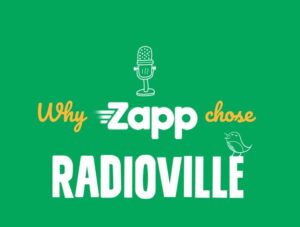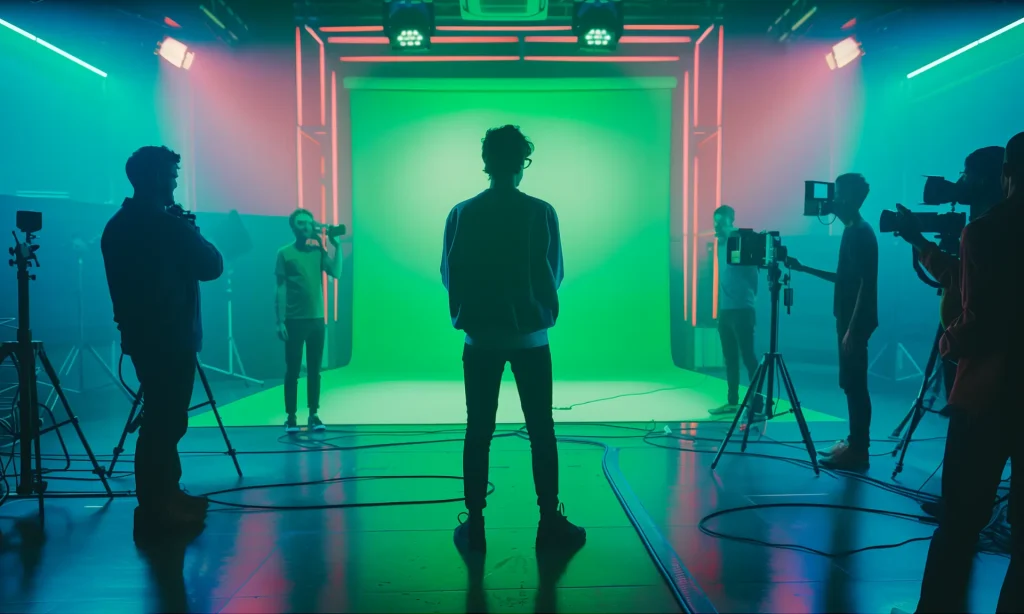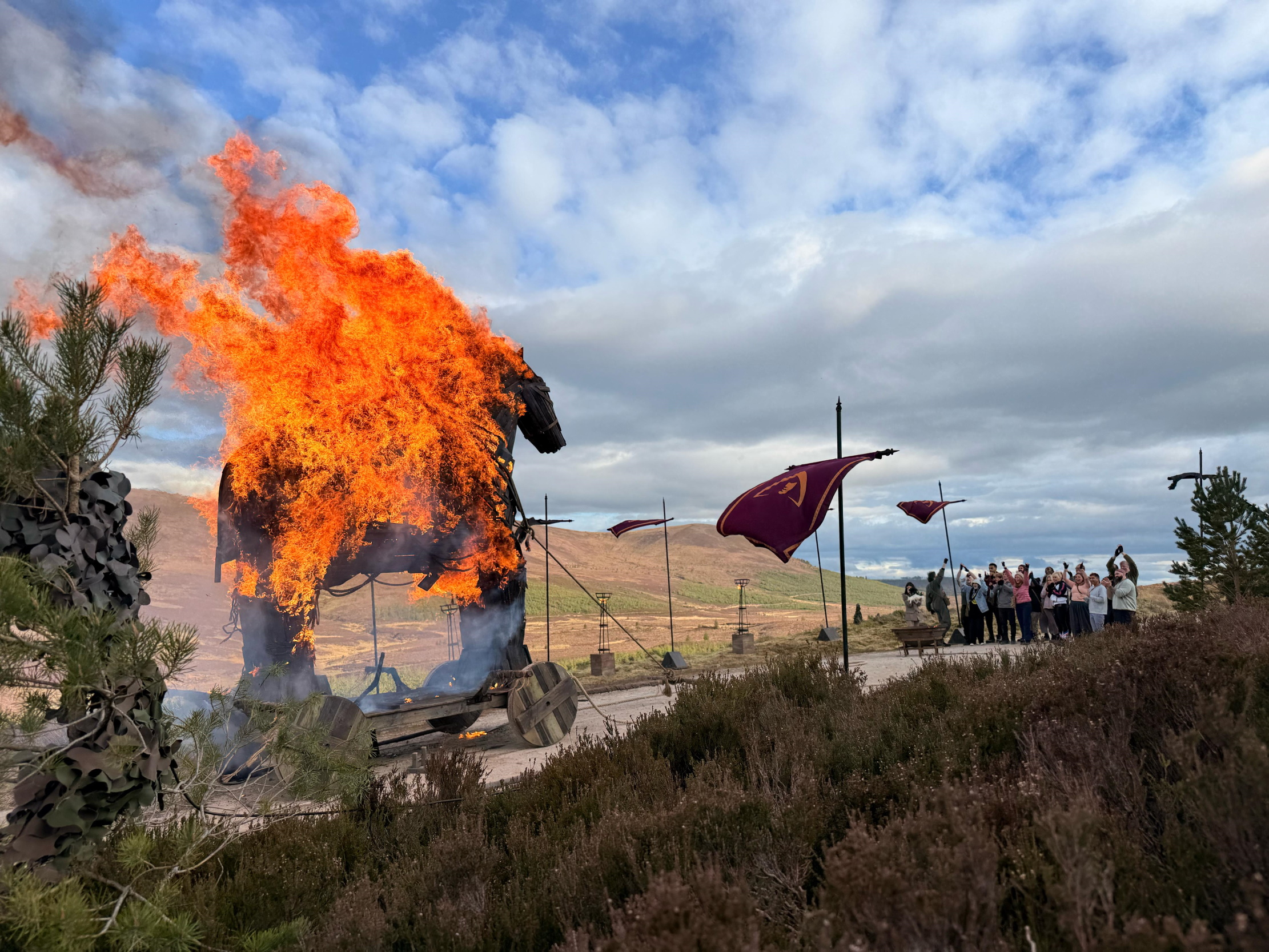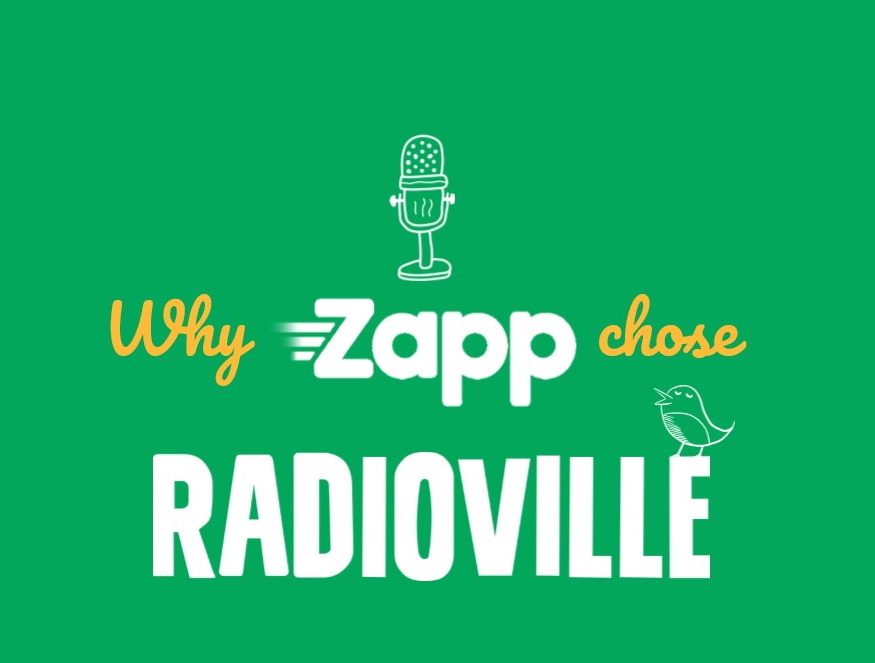Brief Smart, Get Smart: How to Talk to AI Tools
Key Takeaways
- AI is only as good as your ask: Treat AI like a junior creative. Brief it clearly, share tone references, define the goal, and give examples.
- AI Tools are not magicians: Never hit ‘generate’ and just walk away.
- Work out what does and doesn’t work: Style, tone, audience…
- The first result is not the final result: Expect to review, refine, or even throw out your first attempt. Your first draft often misses the mark, but that is normal.
- Poor results happen often: Most of the time, it’s down to how you brief the system — unclear or incomplete inputs lead to weak outputs. But not always. If the system is overloaded or buggy, responses may go awry. And remember: always fact check. AI is powered by algorithms, not truth.
- AI tools rely on you: The clearer, more focused you are, the better the outcome.
Brief Smart, Get Smart: How to Talk to AI Tools
Everyone’s talking about AI. But the real difference between useful and useless often comes down to how you ask.
Prompting sounds simple. But it’s fast becoming a core creative skill. The people getting the most out of AI aren’t the ones with the fanciest tools. They’re the ones who know what to ask, how to shape a brief, and when to refine.
At Broadley, we use AI tools for research, visual treatments, creative deck support, first-draft scripts, video titles, subtitles, and more. But we never press generate and walk away.
We brief AI like we brief a junior team member. Clear instructions, tone references, output goals, and examples. Then we iterate. We test. We refine. Because it’s not about automation for the sake of it. It’s about acceleration with intention.
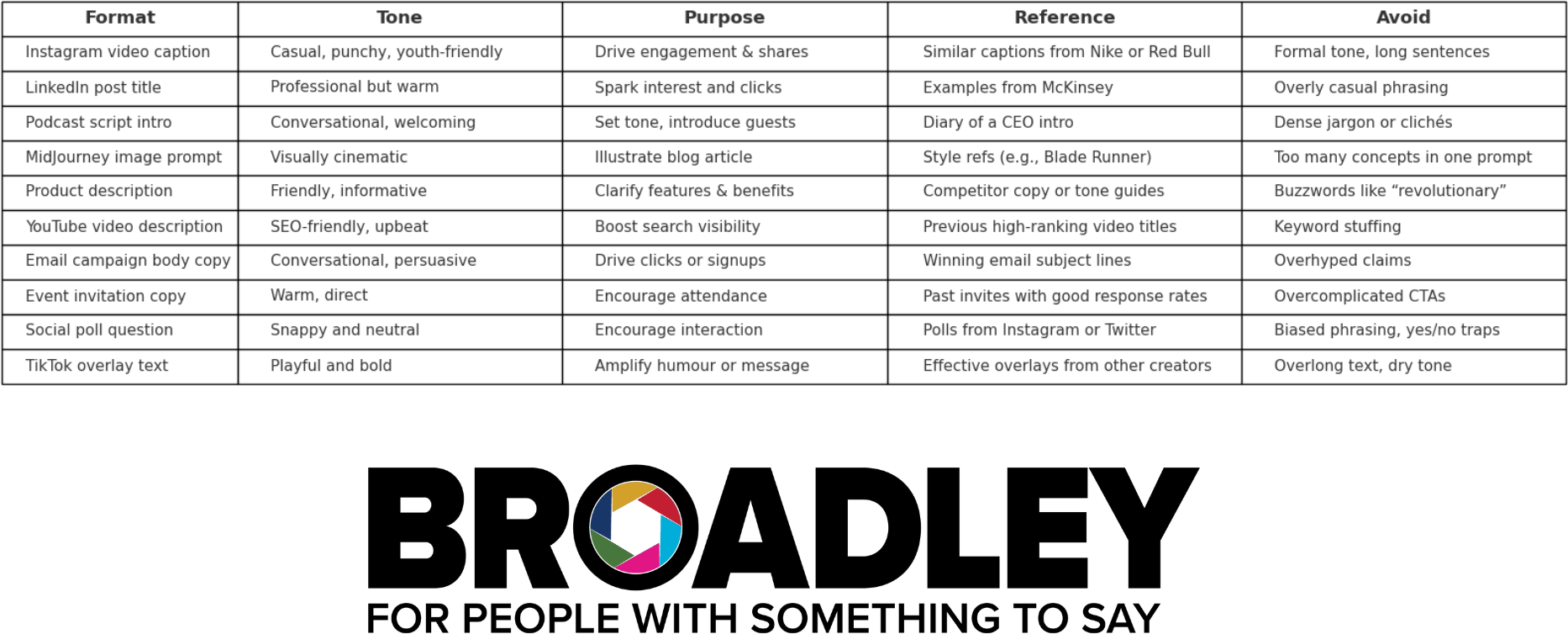
What Doesn’t Work
- Vague requests with no structure
- Asking AI to “make it punchy” with no context
- Relying on the first output as final
- Forgetting who the audience is
What Does Work
- Giving tone, format and purpose up front
- Including examples or reference material
- Naming the platform or audience
- Being specific about what the AI should avoid
For example, if we’re creating social video titles, we’ll give the AI:
- Word count range
- Target platform (e.g. LinkedIn or TikTok)
- Keywords to include or avoid
- A rough headline or angle to build from
- And sometimes examples of posts we like (or hate)
What to Know Before You Prompt
Not all AI misunderstandings are the AI’s fault. Sometimes the issue is upstream.
If your output feels off, ask yourself:
- Did I explain the context?
- Did I define the purpose?
- Did I share good examples?
- Did I make clear what to avoid?
Even with that, the first result is rarely the best. That’s normal. What we’ve found is that better prompts come from better prep.
The same way you wouldn’t expect an editor to colour grade without knowing the look you’re after, you shouldn’t expect AI to deliver gold without direction.
Here’s the irony: writing the article you’re reading now followed the same pattern. We shared ten articles, background notes, tone guides, workflow limitations, and very specific do’s and dont’s. And still, the first set of responses can easily miss the mark, that’s not a bug, that’s the process. AI needs the same level of specificity and calibration to deliver something great and it can sometimes just go wrong (over and over again) so patience is always key….
Why It Matters in Production
Time is always tight. Deadlines don’t move. So if AI is going to save you time, it has to be briefed properly from the start.
We’ve seen how weak prompts lead to junk outputs, which in turn leads to time lost reworking everything manually. It’s like giving a camera crew no shot list and expecting a masterpiece.
If your AI results are average, it’s probably not the model. It’s probably the ask.
Broadley’s Approach
We’ve built internal guides for how to brief different AI tools, depending on the job. We test prompts, document what works, and train our team on how to get the best out of it.
Whether it’s scripting an explainer or generating first-draft titles for a content series, the goal is the same: fast, usable material that still feels human. And then we refine it with real eyes and ears.
We also know when not to use it. If something is sensitive, high-stakes, or needs a very specific voice, we start with people first.
Common Traps to Avoid
- Overloading the prompt with contradictory instructions
- Forgetting to specify audience or context
- Expecting it to make creative decisions you haven’t made yourself
- Copying outputs directly without checking brand voice
AI is fast, not magic. The smarter your input, the stronger your outcome. This applies equally to ChatGPT, image generators, automated subtitling, script builders and content planners.
Coming Up Next in the Series
In Article 3, we’ll explore how AI helps us stretch a single piece of content across multiple formats. Think TikTok, LinkedIn, YouTube and more, all from one well-planned shoot.
FAQ: How to Talk to AI Tools
So, just how do you ‘talk’ to AI Tools?
What is clear is that the better structured and detailed your prompts are, the better the end result:
- Can I just ask AI to “make it good”? No, it needs much more direction.
- Why is my AI output so average? Chances are, it’s what you asked it in the first place.
- What should I include in a prompt? Things like tone of voice, length, format…
- Is one prompt enough? Maybe but unlikely. Expect to refine a number of times.
- What’s a common mistake people make with AI? Poor prompts and treating the first result as the final result.
- How should I brief AI? Like a junior member of your team using clear instructions and what kind of outcome you want. Then you shape and reshape it until it works.
AI can save you time, money, and production headaches, but it’s not a miracle worker. AI starts and ends with you. The better you ask, the better you get.
Got a Production Coming Up and Want to Use AI the Right Way?
We can help you work faster, stay on brief, and keep your story sharp from day one.
Please call us on 0207 725 5858 or email [email protected].
Broadley Studios – For People with Something to Say
Find Services in YOUR Area
Generative AI Consultancies
Company Profile
MCH HUBS
RECENT ARTICLES





